The other day I was on the phone with a friend and she heard my daughter exclaim in the background “Yay! Brussels Sprouts!” My friend started laughing because she had never heard a child so excited about eating their veggies, especially brussels sprouts!
I never want to take this for granted because I am so thankful that both of my children love vegetables…and I believe a big reason for this is how I started feeding them when they were babies.
The first food I fed my both my children was an avocado. I started with avocado because it typically doesn’t cause allergic reactions, has a mild flavor, and is full of nutrients, good fats, and calories. It’s also soft and easy for babies to eat. It makes the perfect first food!
Of course, avocado is technically a fruit, but it is not sweet. It’s important to create a savory palate in your child instead of fostering a preference that everything be sweet—most of your baby’s food shouldn’t be sweet or sugary. It’s much easier to promote a love for savory food from the start than it is to break a sugar addiction later in life!
I continued with various vegetables before I exhausted the options and then introduced all the fruits, some meats, eggs, oats and quinoa. I cooked and served it mashed or in soft finger foods that were safe for them to eat. Letting a baby feed themselves after the age of 6 months is called Baby-Led Weaning, and this worked amazingly for my children.
I didn’t buy jarred baby foods, boxed rice cereals, or pouches. This was doable when we were at home, but really became a struggle when we were traveling or weren’t at home. It’s also not easy to always make homemade food for your baby.
This is why I want to give you some tips on how to choose the best packaged baby food for your babies, for when you can’t make your own. To make it easy for you, I’m going to share with you 5 things to avoid when shopping for baby food that only take a few seconds to spot on the label.
5 things to avoid in baby food:
1. “Ascorbic Acid” or “Citric Acid” added as preservatives
Citric Acid is naturally found in fruit, but they aren’t using the natural stuff. Manufactured Citric Acid is fermented from a black mold called Aspergillus niger. This mold is a potent allergen, and experts say that this processed version of Citric Acid contributes to allergies and inflammation in the body, possibly leading to allergies, asthma, and other health conditions. Could this be a major culprit in rising cases of children with allergies? (1)
Another preservative very common in baby food is Ascorbic Acid, the synthetic form of Vitamin C. It sounds harmless, but these preservatives actually can make baby food much more acidic. Dr. Jonathan Aviv wrote in his book, The Acid Watcher Diet, that baby food in a jar is surprisingly acidic when compared with natural whole foods. In fact he found that baby banana food with “Ascorbic Acid” or “Citric Acid” is about 100 times more acidic than a regular banana! (2)
This can be hard on a baby’s tummy and can lead to acid reflux and rashes. Also, it can contribute to tooth enamel erosion if sucked from a pouch, where the acid is allowed to sit in the mouth for an extended period of time.
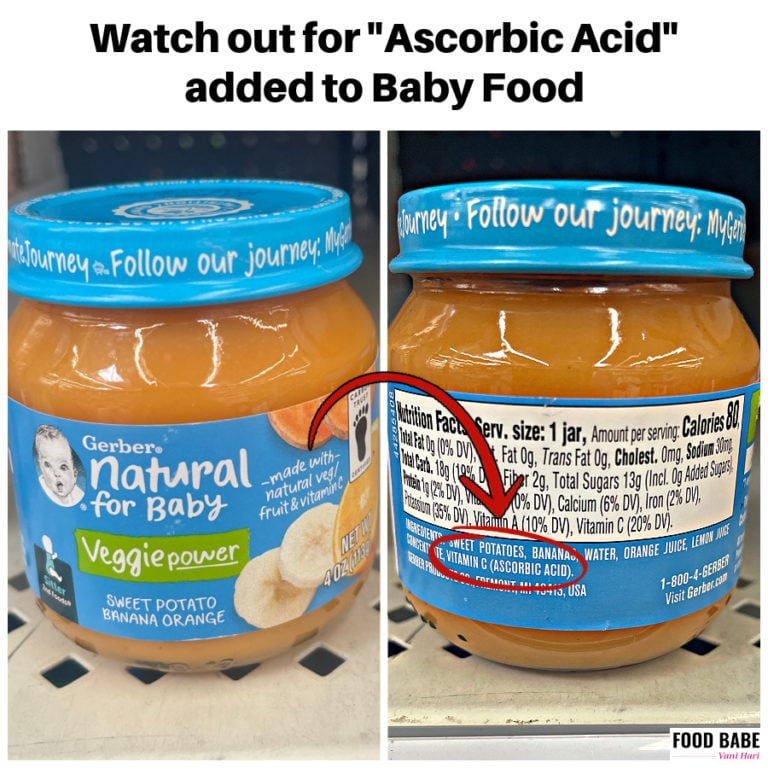
2. Fruit Puree “Concentrate” and Juice “Concentrate”
When you see a puree “concentrate” on the ingredient list, this is an indication that the fruit or vegetable has been very heavily processed. To make a concentrate, fruit puree or juice is processed into a syrup, which makes it higher in sugar, lower in fiber, and lower in vitamins & minerals than whole fruit. Some experts say it is similar to high-fructose corn syrup! (3)
The exception is when you see “Lemon Juice Concentrate” on the label when it’s added as a natural preservative. This is very different than the main ingredients (ie. apples, pears, etc) processed into a concentrate.
Most baby food is further processed repeatedly with heat or thermal pasteurized to kill all bacteria – but this also kills nutrients, enzymes, fiber, flavor, and texture. (4) The end result is runny baby food that’s missing nutrients, flavor, and the texture found in real food.
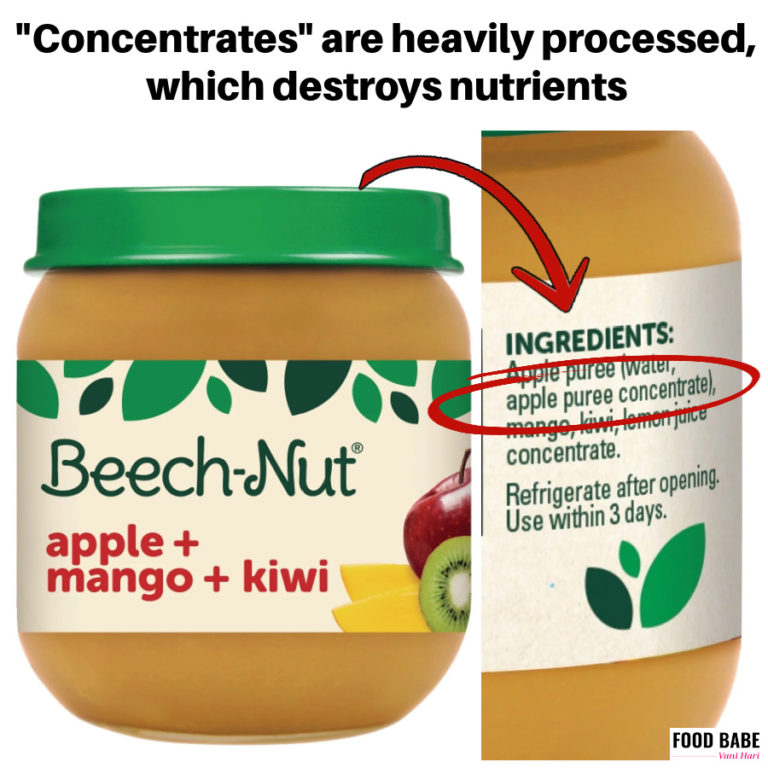
3. Added Refined Sugar
There are two types of refined sugar often added to baby food that you’ll find on the label: “Juice Concentrates” and “Sugar”. These sugars aren’t part of a whole food (so, this wouldn’t include the sugar naturally found in a whole banana, for instance). These sugars are heavily processed, refined, and concentrated in a lab – and have no nutritional value.
Experts recommend that babies under the age of 2 not eat ANY added refined sugar, and that the only “sugar” in their diet should include what is naturally found in whole foods. (5)
4. Not Organic
It’s safest to choose organic food for your baby. That’s because harmful pesticides are often found in conventional baby food. In 2023, the Environmental Working Group sampled 73 baby foods from Beech-Nut, Gerber, and Parent’s Choice, and found pesticide residues in 38% of the conventional (non-organic) samples. They found NO pesticides in the 15 organic baby foods that they tested! (6, 7)
Apples, blueberries, pears, peaches, and strawberries are all included on the EWG Dirty Dozen list of conventional produce most contaminated with pesticides. (8) You’ll often find these fruits in baby food, so this is likely a major reason for pesticides in non-organic baby food products. The highest amounts of pesticides detected by EWG were in Beech-Nut Naturals Apple, Gerber Natural Toddler Apple Pear Peach, and Gerber Natural Apple Strawberry Banana. (7)
The most prevalent pesticide detected was Captan, linked to cancer. (9) They also found Acetamiprid and Imidacloprid, which may harm nervous system development, particularly in the brain. (10, 11) Children are most susceptible to the harmful effects of pesticides, so this is why organic baby food is so important.
5. Lack of variety of produce used: Mostly apples and bananas!
The majority of baby foods have apple or banana as the main ingredient, like Gerber’s “Apple Avocado” or Happy Baby’s “Bananas & Sweet Potatoes” jar.
Babies then become accustomed to the flavors of apple and banana, and may not get to taste vegetables or other fruits at all, because they are being masked by the apple and banana. This is especially problematic when it comes to vegetables, because babies should be exposed to bitter flavors at a young age, to help them develop a love for vegetables.
Even worse, a lack of variety is not ideal for a baby’s gut health. My family’s pediatrician, Dr. Ana-Maria Temple, says it’s best to get fiber from a variety of foods to feed different types of bacteria in the gut. When you’re eating molecules from different fruits, vegetables, grains, etc, you are creating a more diverse gut microbiota, which leads to much better health! (12) This goes for adults and babies alike, but you want to start your children off right with as much variety in their diet as possible.
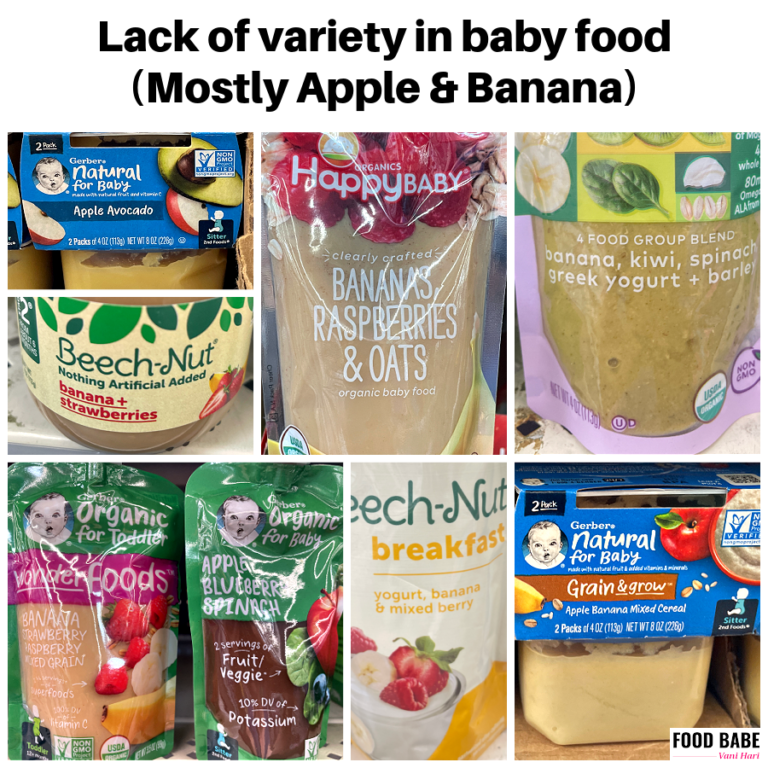
In general, packaged baby food is very processed…
Typical baby food (whether in a jar or a pouch) goes through intense processing before it ends up on the shelf. The skins and seeds are removed from the produce (removing fiber), and then it’s subjected to prolonged heat (over 185 degrees) and “deaerated” to remove oxygen. And that’s just the beginning…it’s heated again to pasteurize it, and may even go through additional steps such as evaporation and reconstitution, before preservatives are added. (13)
Should it even be considered food at this point?
For all of these reasons, I was so happy to find Amara Baby Food.
It ticks all the right boxes…
It’s organic.
It’s minimally processed. It’s freeze-dried to retain the nutrients, taste, and texture of real food.
It doesn’t contain any added sugars or concentrates.
They never use “Natural Flavors” or other questionable ingredients.
There’s a ton of variety in their baby food (they use amazing vegetables like Kale, Peas, Sweet Potato, Pumpkin, and Black Beans!)
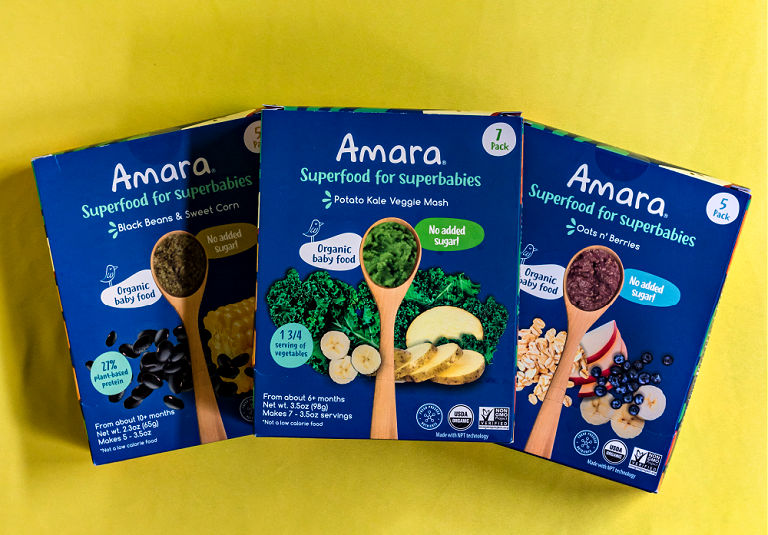
The ingredients in Amara are stellar.
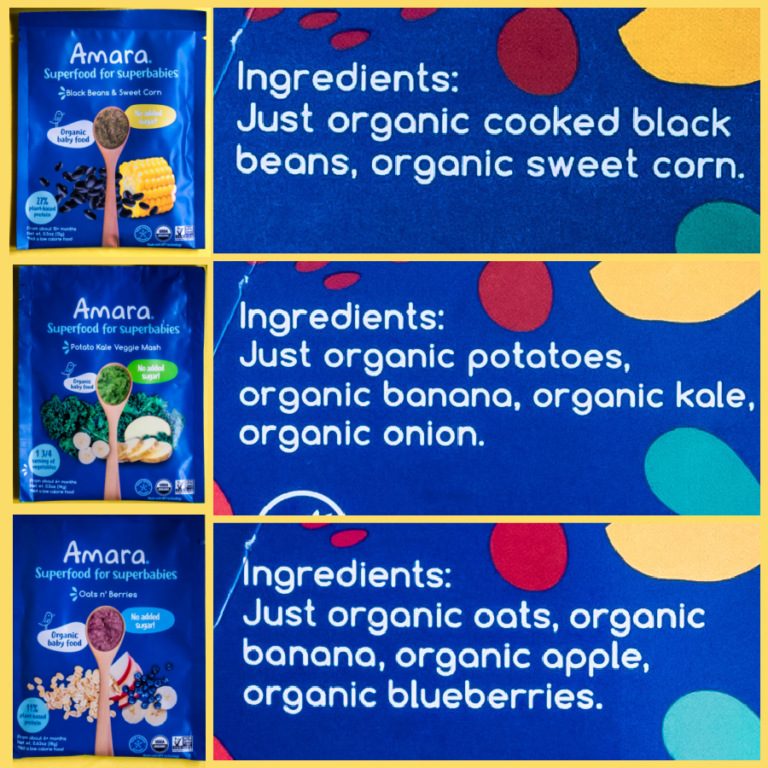
Amara is the closest to homemade baby food that I’ve seen, right down to how it looks and tastes.
Amara Baby Food comes in convenient freeze-dried packets. You simply mix the baby food with breast milk, formula, or water to get the consistency you want. This way the texture is adjustable, as you can make it thicker or thinner based on your baby’s preference.
And texture is a big deal when feeding your baby. It’s best for children to learn not only new tastes, but new textures when trying new foods. Instead of everything they eat being the same runny mushy texture, each variety of Amara’s baby food has a unique texture, just like real food! The Potato Kale Veggie Mash isn’t the same texture as the Sweet Potato Raspberry, for instance.
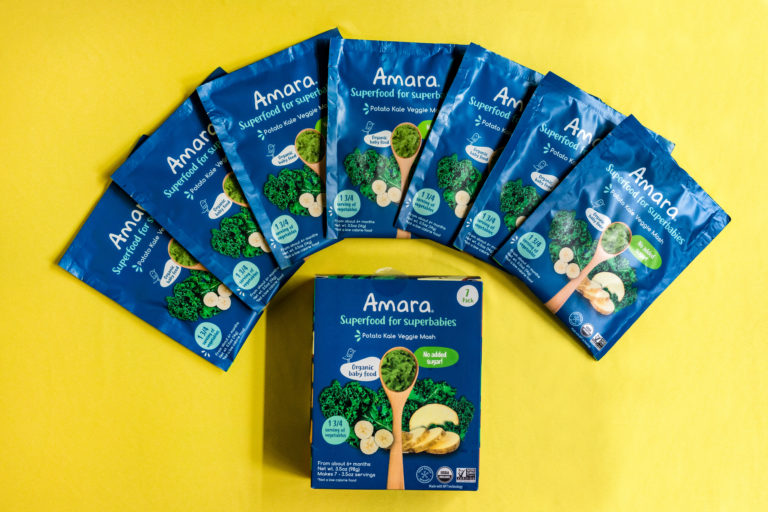
Just look at how Amara looks next to typical overly-processed baby food:
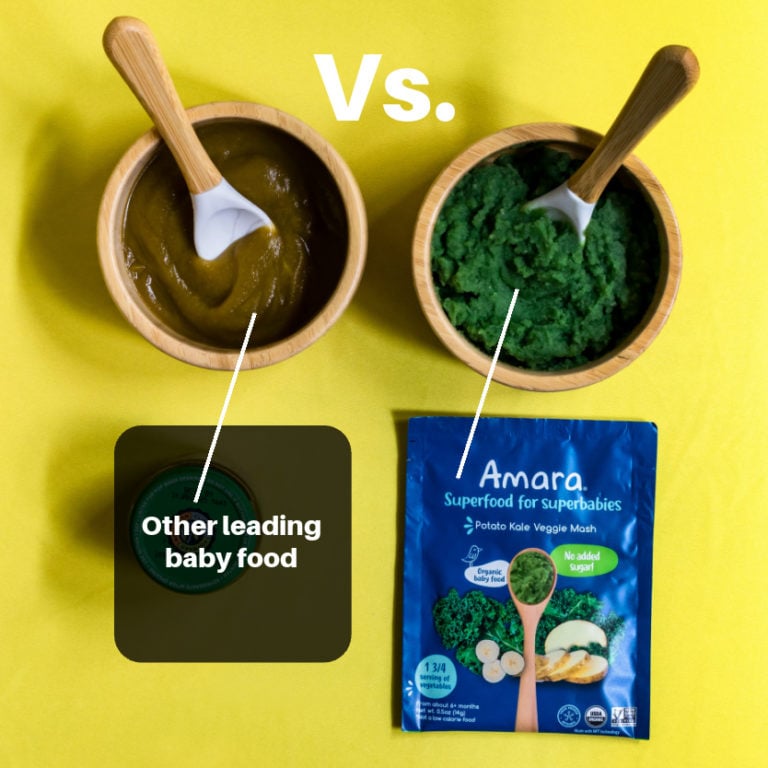
I also love how incredibly convenient it is for parents who can’t always make their own baby food. I wish I knew about this brand when my daughter was a baby. It would have saved me so much time and hassle when I took her on the road with me!
I’ve come to love this brand so much that I became an investor in Amara. I always want to share products with you that have amazing ingredients, and that make our lives easier.
Want to try it? Get 15% OFF your first order of Amara Baby Food with promo code: BABYFOOD
If you know any parents who need to know the truth about baby food, please share this post with them.
Xo,
Vani
References:
- https://www.ncbi.nlm.nih.gov/pmc/articles/PMC6097542/
- https://www.amazon.com/Acid-Watcher-Diet-Prevention-Healing/dp/1101905581
- https://www.npr.org/sections/thesalt/2017/09/01/545336956/what-is-fruit-concentrate-anyway-and-is-it-good-for-you
- https://slate.com/human-interest/2013/09/homemade-versus-store-bought-baby-food-your-kitchen-beats-the-jars.html
- https://publications.aap.org/aapnews/news/7331/Added-sugar-in-kids-diets-How-much-is-too-much?autologincheck=redirected
- https://www.ewg.org/research/pesticides-still-found-baby-food-biggest-toxic-threats-eliminated
- https://www.ewg.org/babyfoodtestresults
- https://www.ewg.org/foodnews/full-list.php
- https://www3.epa.gov/pesticides/chem_search/reg_actions/reregistration/fs_PC-081301_1-Sep-99.pdf
- https://www.nrdc.org/bio/jennifer-sass/neonic-pesticides-potential-risks-brain-and-sperm
- https://www.efsa.europa.eu/en/press/news/131217
- https://www.dranamaria.com/the-number-one-food-for-gut-health/
- https://amaraorganicfoods.com/blogs/blog/the-ugly-truth-about-baby-food-pouches


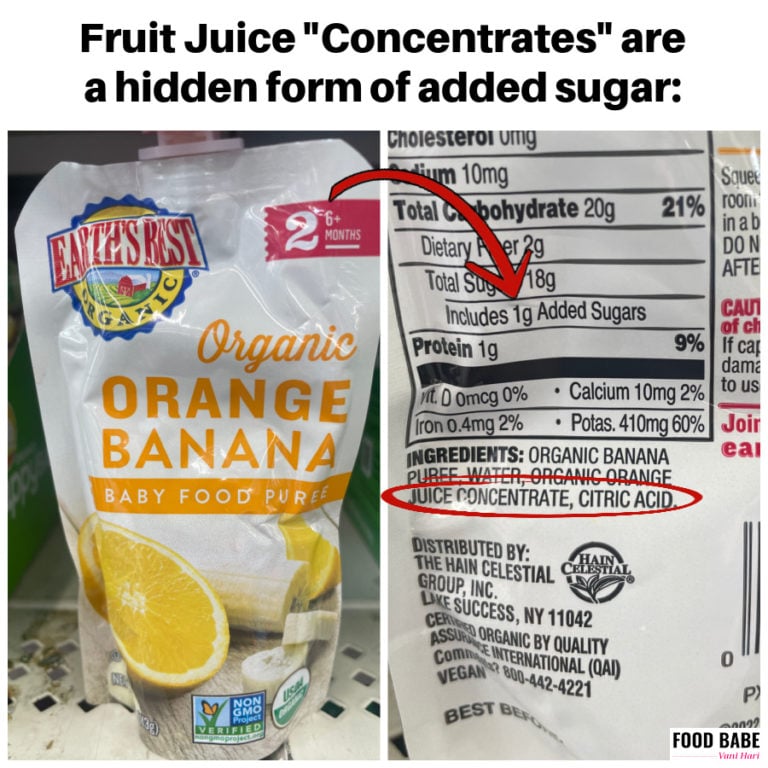
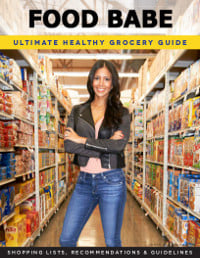
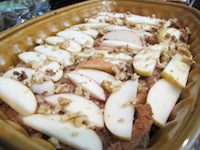

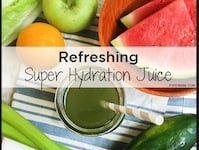


This is so important. Thanks again for the research and your sharing your work with all of us.
So happy to share this email with my nieces and nephews that are at child bearing age. I am also asking them to share with their friends and co-workers and on their social media platforms